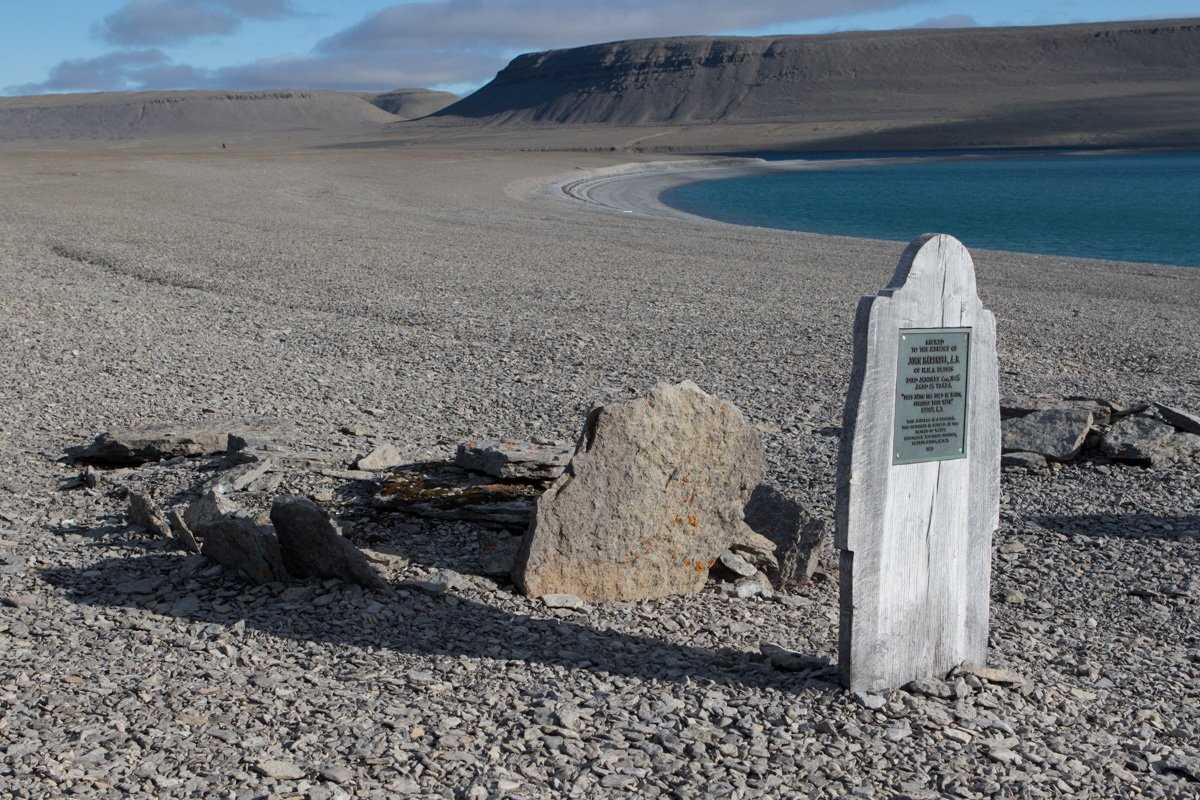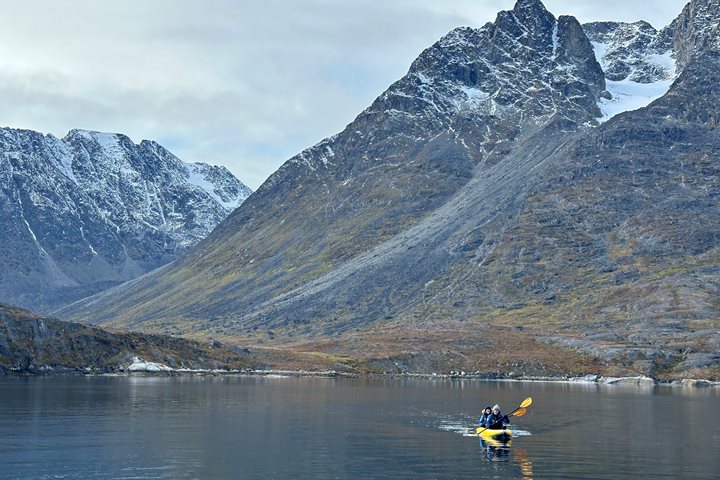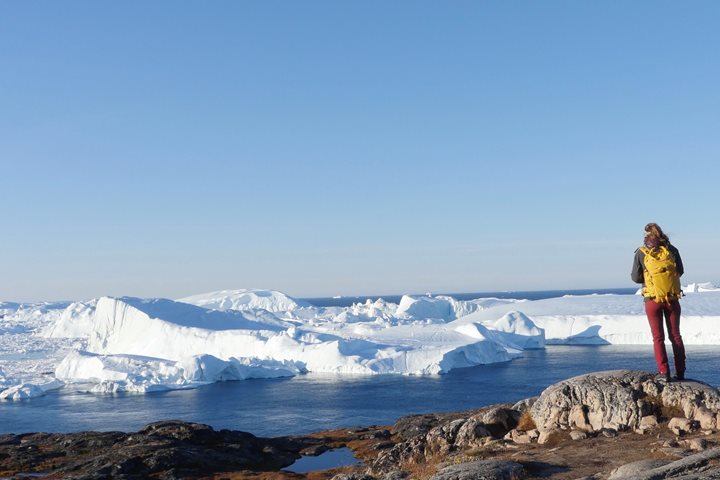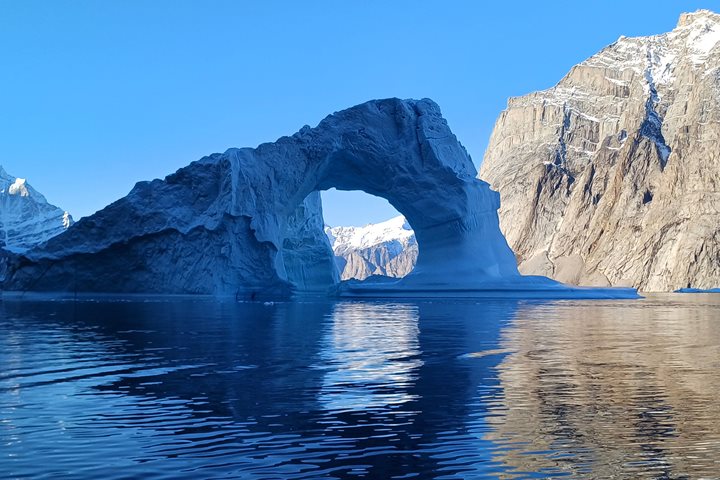This morning National Geographic Explorer dropped the hook off Beechey Island and the historic sites of multiple Arctic expeditions. The bare and windswept island provided suitable flat and sheltered land for expeditions beginning with Sir John Franklin’s expedition of 1845. In search of the Northwest Passage Franklin and his complement of 129 men decided to overwinter at this site after circumnavigating Cornwallis Island. His winter camp left traces of their presence, the most obvious being the graves of the first three men to lose their lives in what became a long and tragic ordeal for the full complement of crew and officers. The three men: Torrington, Hartnell, and Braine died young as a result of tuberculosis, pneumonia, and lead poisoning, a foreshadowing perhaps of the destiny of the men who continued south in April of 1846. Discovered in 1850 these graves were the first sign of the Franklin expedition and the beginning of a hard scouring of the Arctic in search of this lost expedition.
Further down the beach the historic site of Northumberland House helped to paint the picture of the amazing search parties sent out to search for Franklin starting in 1848. Built as a supply depot and emergency shelter in 1852 by the Belcher expedition it served as the jumping off point for the five ships and 222 men who would fan out looking for Franklin both north, south, and west. While Belcher eventually abandoned four out of the five ships in the ice and faced court martial upon return home over the abandonment of ships he was acquitted, though his actions forever frowned upon. From 1847-1859 36 expeditions were sent out to search for Franklin both on land and sea and were largely responsible for charting the Arctic coast in the process of the search. Out of sight the sunken HMS Breadalbane, a three-masted merchant ship sent to Beechey to support the Belcher expedition also constitutes as one of the historical sites of the area. Crushed by sea ice on August 22, 1853 it is the northernmost shipwreck yet discovered.
Cruising down the coast of Devon Island after lunch we were blessed by the sighting of one of the big four of the Arctic, a bowhead whale! Feeding in the shallows this species is identified by the lack of dorsal fin and prominent muscular bulge in the blowhole area. Bowheads have the longest baleen plates of any whale species reaching lengths of 15’ and gave whalers reason (aside from the blubber) to hunt this species to near extinction. With the ability to break through ice as thick as 2’ this species is truly at home in the crustacean-rich waters of the north.
Our landing at Radstock Bay helped to portray the once abundant bowhead as the Thule sites we visited on a raised beach had multiple winter houses constructed of skulls and ribs to support animal skin roofs. Inhabiting this area around 1200 A.D. these predecessors to the Inuit were well adapted at surviving off the bounty of the sea. Above the Thule site a towering headland, Caswell Tower and the ridge leading to, provided a great view of what is considered to be the largest uninhabited island on Earth, Devon Island.






